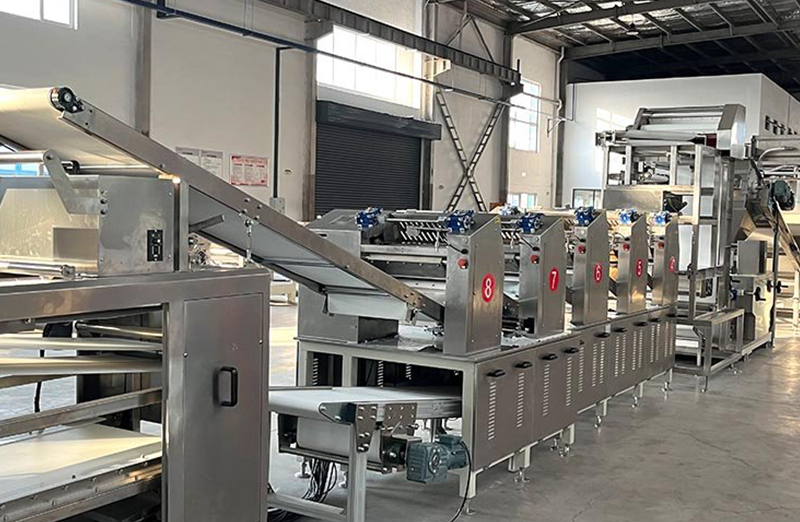Email: [email protected]
 2024.09.16
2024.09.16
 Industry News
Industry News
The non-fried noodle production line replaces traditional frying with steam cooking, a method that ensures the noodles are thoroughly cooked without absorbing excess fats or oils. Steam cooking involves high-temperature steam exposure, which evenly heats the noodles while retaining their moisture and inherent flavors. Unlike frying, which introduces oils that can alter the noodle's nutritional profile and texture, steaming maintains the noodles' structural integrity, producing a cleaner, oil-free product. This method also enhances nutrient retention, offering a healthier alternative without sacrificing taste or texture.
After the steaming process, the noodles undergo air drying—a controlled process that gradually removes moisture while preserving the noodles' natural characteristics. Air drying, often done at low temperatures, prevents over-drying or brittleness, ensuring the noodles retain their desirable chewiness and firmness. By eliminating the need for frying, this method not only minimizes oil content but also preserves the noodles' nutritional profile. Air drying is engineered to maintain consistent humidity and airflow, ensuring even drying throughout, which results in uniform noodle quality across large production batches.
A critical factor in the success of non-fried noodle production lies in the careful selection of ingredients. Premium-quality flours, combined with natural flavor enhancers, ensure that the noodles develop a robust taste profile without relying on the oil absorbed during frying. Special attention is given to the gluten content and water absorption capacity of the flour, as these factors significantly affect the noodles' texture. By using high-grade ingredients, the production line can create noodles with a rich flavor base that doesn't require oil for palatability, thus providing a healthier product while retaining the full-bodied taste consumers expect.
Moisture control plays a pivotal role in the production of non-fried noodles. The production line is equipped with sophisticated moisture management systems that continuously monitor and regulate the water content during the cooking, drying, and cooling stages. This precise moisture control ensures that the noodles maintain their firmness and elasticity, qualities often achieved through frying. By optimizing the moisture content throughout the production process, the noodles are kept from becoming too dry or too soft, achieving a balance that enhances the eating experience while completely eliminating the need for frying oil.
To ensure that the non-fried noodles retain their full flavor, seasonings and additives are carefully integrated at key stages of production. For instance, flavorings are often incorporated directly into the dough before steaming, allowing the noodles to absorb seasonings without requiring oil as a flavor carrier. This method ensures that flavors are locked in during cooking, and the subsequent drying process preserves these taste elements. Additionally, certain flavor compounds are activated during steaming, further enhancing the depth of the noodles' taste profile, all without adding oil.
The non-fried noodle production line often employs advanced drying techniques such as vacuum drying or low-temperature drying to further refine the final product. These methods help maintain the noodles' structure and flavor integrity, eliminating the degradation that sometimes occurs in traditional frying methods. Vacuum drying, for example, allows for moisture removal under reduced pressure, lowering the boiling point of water and enabling drying at much lower temperatures. This technology prevents heat damage to the noodles, retaining their original taste, texture, and nutritional value. Similarly, low-temperature drying minimizes exposure to high heat, preserving delicate flavors and enhancing the overall quality of the noodles.
NON-FRIED SEMI-DRY/FRESH COOKED(UNCOOKED) NOODLE PRODUCTION LINE
